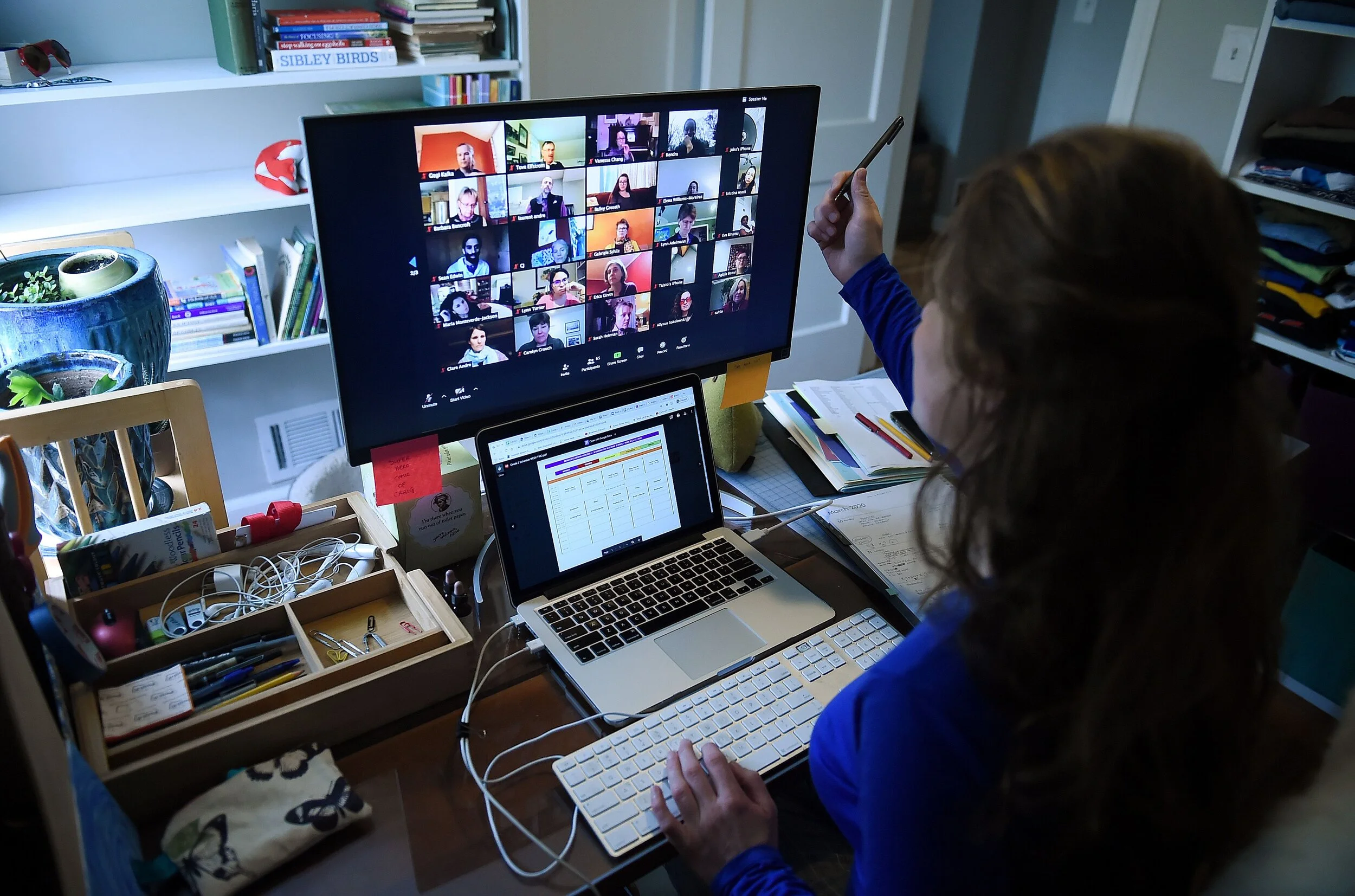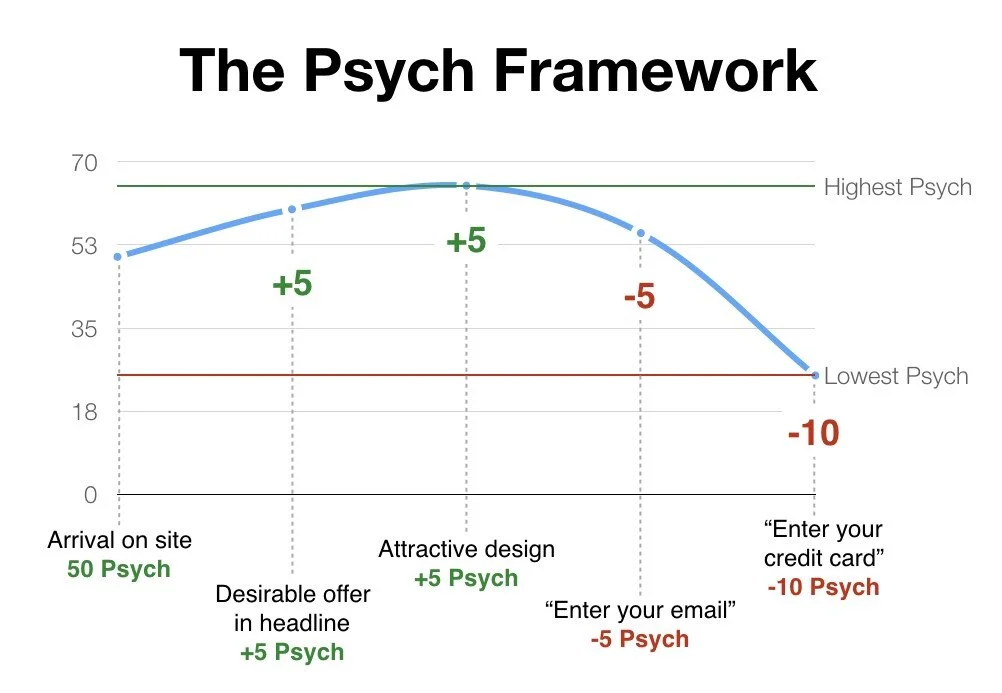A Growth Marketer, A Special-Needs School District, & COVID-19 Part 2: Attendance
How we grew online student attendance from 20% to 82% in a single month.
source: https://ftw.usatoday.com/2020/04/zoom-games-friends-jackbox-netflix-party-quarantine
In part 1 of this series we told the story of what immediately happened after the schools shut down. All of a sudden my mom, the superintendent of a special needs school district, a woman who can solve any problem in her domain, was facing a problem that actually fell under my role in the household—to "get the Google to work"— and the stakes had never been higher. Part 1 focuses on ACCESS. It explains how in the earliest days of the shutdown, we launched a digital campaign (with no access to digital assets, budgets, or an existing following) and raised $23,000 for student computers in just two weeks.
Part 2 is a story of Attendance. How we used proven growth frameworks to increase student attendance from 20% to 85% in a single month.
Ok so we got all of the kids laptops.
But now what?
Three weeks into distance learning, student engagement was abysmal. Fewer than 20% of students were showing up for class and the teachers had no tools or resources to bring students into the fold.
We had gone online overnight, and teachers had to be trained in the new platforms. Students needed to learn how to learn online. All without the ability to utilize existing communication channels.
Solving the problem of making classes more interesting to students is a hard one. It was also a challenge that I believed the teachers would figure out over time.
The more pressing issue was that the quality of the instruction didn’t matter if the kids were not even showing up for class to see it.
This is a problem that many startup founders face… do we prioritize product improvement or do we prioritize growth? The difference here is that student attendance is a government mandate. Time was of the essence, and no student could be left behind while we took time to improve online instruction. So we started where we always start. We talked to our users, and a hypothesis began to emerge:
When schools transitioned online the students transitioned from an OPT-OUT system to an OPT-IN system.
What do I mean by an OPT-OUT system? When a student is on campus, in the building, around peers, teachers, and routine, there are many implicit forces pushing them from one class to the next. They had to actively choose to OPT-OUT of participation.
When they are home, those structures no longer exist and the student needs to make an active choice to OPT-IN to attend each online class.
In other words, the psychology, levers, and tools that we needed to use to get a student to attend class are very similar to the psychology, levers, and tools that I use to get a potential customer to buy something online. We had a very standard OPT-IN funnel problem.
After developing a framework to think through the problem, we were able to ask more pointed questions in our user interviews. Here’s what we learned:
Students did not intuitively understand how to use the laptops or Google Suite. This one should have been obvious but struck me by surprise. Aren’t all kids savvy with technology? The answer is that they are savvy on the technology that they use. Many of these kids did not have a laptop before we gave them one (thus the whole point of the computer drive). They didn’t have Google Calendar or even Gmail. What they did have was a mobile phone, TikTok and Snapchat which they could use like wizards.
We did not have an easy way to communicate with kids who were not attending class. If a student is not engaging in school you can send them to the principal’s office. When they are not engaging at home, what do you do? This is a very low income school, many of these kids have parents who are essential workers and cannot possibly monitor their kid’s class schedule all day, nor should they. Parents can be effective tools for re-engagement, but they cannot be the only tool.
Students were oversleeping and having trouble keeping track of their class schedule. When the kids are in school, you have their full attention (or at least the chance to get it). If they are loitering in the hallway, you can tease them all the way to class. When the bell rings, the students move, and all momentum is pushing them towards the next stop on their pre-planned day. When COVID hit, all of that structure went out the window. As adults, we all felt the destabilizing nature of working at home amid a global health crisis. This was amplified for kids who were doing it on their own for the first time in their lives and further compounded for a special needs student population.
What we needed to do was make it as easy as possible for students to attend class, and we had to implement a system that would scale across teachers and schools with minimal professional development requirements.
Surprisingly, I had solved similar problems many times in the past. I’d compare it to scaling a lapsed user flow across an international organization but with significantly higher stakes and a requirement of 100% recovery rate.
I pulled on some basic UX principles:
Communicate through the channels that have the user’s attention.
In this case, it was mobile text.Identify the message and the time that would most likely result in the targeted conversion event.
In this case, the conversion event was class attendance.
The Solution:
Step 1: Automated texts with the classroom Google Hangout link sent five minutes before class
The goal here was to remove every possible barrier to class attendance. Think about this user flow: The student is playing XBOX, gets a ping on his phone, clicks one button, and boom, the kid’s now in class. Once in the classroom the teacher at least had a chance to get the kid’s full engagement.
Step 2: Rewards program
Let’s be real. There is a good portion of kids who are not going to show up for class no matter how easy you make it for them (speaking as a truly reformed delinquent). These are our adjacent users (Bangaly Kaba, former VP of growth Instagram) and in order to bring them on board, we need to step into their shoes. But how do you engage a student who has no interest in attending class?
Easy, you bribe them with free food.
To re-engage the kids who had fallen off the proverbial map, we implemented a rewards program. Students got points for class attendance, participation, and streaks. Points were then converted into raffle tickets toward Uber Eats and Amazon gift cards (ie. the modern COVID classroom pizza party.) We funded the program with the excess funds that we raised through the computer drive (described in part 1 of this series.)
We still had the problem of informing the non-engaged students of the program. Those students may not respond to a text from the school, but they might respond to some well-intentioned peer pressure. So to incentivize the kids who were engaged to reach out to their unengaged classmates we implemented point multipliers for 100% classroom attendance and it worked like a charm. Within 1 month attendance increased from 20% to 85%!
Pro tip: Create incentive structures that reward your most active users for mobilizing their friends to the app.
Step 3: “Block Parties”
“Yeah, but what if the kids don’t know you’re giving them free stuff?”
Easy, you throw a party and invite all of their friends.
Every Friday each school hosted a virtual “block party,” a fun event where the teachers would announce the reward program raffle winners. It was also an important community experience for kids that were isolated in the middle of the pandemic. The parties gained a critical mass and word of mouth from the engaged students brought in the students who were ignoring all teacher communications.
Step 4: Improve the product
Alongside the implementation of these initiatives, the teachers worked overtime to explore new and engaging tools and adjusted their curriculum for online learning. Some of the programs are so successful that the schools are considering keeping some curriculum online even after schools open up.
So how can I use these learnings to improve engagement in my business outside of education?
Most of the people who read this blog are CMOs, entrepreneurs, product leads, or managers, not necessarily teachers or school admins, so it’s important that I always tie it back to how you can use these learnings in your biz. So, here you go!
1) Use the channels that your users are already engaged in.
If you need to drive users to a different communication channel, first engage them on the channels they already use in their daily lives (preferably channels where you control the customer relationship) and funnel them into the channels you are using with richer content.
In this case, we used mobile text to funnel students into Google Hangouts and then into Google Education.
2) Identify the message and the timing that would most likely motivate the user to take the intended action. Then build automated flows to ensure consistency in communication and cadence.
In this case, we set up scheduled text message sends at the school level to correspond with the student’s class schedules.
3) Making something social does not just mean generating a social media strategy.
Identify who your most engaged audiences are, and build incentive structures that encourage them to bring other people into the fold. Those incentive structures should align with a product offering that improves with a high percentage of community engagement.
In this case, we created a reward structure that benefited both individuals and the whole class for a high percentage of student attendance and engagement.
4) Think about every interaction as an emotional event.
This one is straight from Darius Contractor’s “Psych Framework”, and it’s a gem. The Psych Framework is “a systematic way to detect and improve the way an experience affects user emotional energy, which we call “psych”.” Some parts of the user experience increase psych, some decrease psych. The more “psych” a user has the easier they are to engage. In this case think, trigonometry = low psych, pizza party = high psych. If you try to engage a user at a low “psych” level with a “low psych” experience, they are unlikely to participate.
At this moment, the disengaged students had a “psych fuel tank” that was at a dead low. We couldn’t re-engage them with an automated text promoting their next algebra class, so we created a “high psych user touchpoint” -- a virtual block party promoting a rewards structure that linked back to classroom attendance. When dealing with a lapsed user flow, you can assume that the user’s proverbial “psych fuel tank” is near empty (ie. they are not likely to engage). The initial goal of a win-back campaign isn’t to get the lapsed user to purchase, it’s to get them to re-engage. Produce content that hits the user from a new angle and think about how you can provide real value.
Darius Contractor Increase funnel conversion with Psych
5) Never underestimate the friction of that stakeholder buy-in can produce.
Rather than develop a whole new program to implement your initiative, see if there are existing programs that can be utilized or modified to meet the same goal. Time is money when users are working through a funnel, and you can save a lot of time by repurposing an existing initiative rather than creating a brand new one from scratch.
In this case, the school had a small rewards program already in place. We used the excess funding from the computer drive (more on this here if you missed chapter 1), and put that program into hyperdrive. It was easy to get buy-in across the administration because it was a concept they had already approved and had seen results from. It was then easy to explain the program to the teachers who had already seen its value in the classroom. We just needed to bring the program online and layer a points system on top of it to maximize its effectiveness.
Give credit where credit is due…
All of the credit belongs to the teachers and administrators, who worked tirelessly developing curriculum, reaching out to students, and going above-and-beyond to keep engagement as high as possible. As a graduate of a liberal arts school, I’ve always believed in the power of intersectional learning. I believe that there is a lot to gain from taking knowledge and frameworks from one discipline or industry and applying them to another. This was such an incredible opportunity to see that philosophy at work and to work alongside my mom and her staff.
——————————
DONATE TO THE SCHOOL HERE
We are raising money for teacher grants — The impact these teachers can have on their students with just a little bit of funding has blown my mind.
For example, Reginald Bennett (aka Mr. B), an incredible music teacher in the district, purchased an audio workstation called Soundtrap with a teacher grant.
He then created an ensemble of 30 different special-needs music students from across the district to perform and record their own version of Lean On Me — all during the shutdown.
👇🏽 Subscribe & get the next chapter in your inbox 👇🏽


